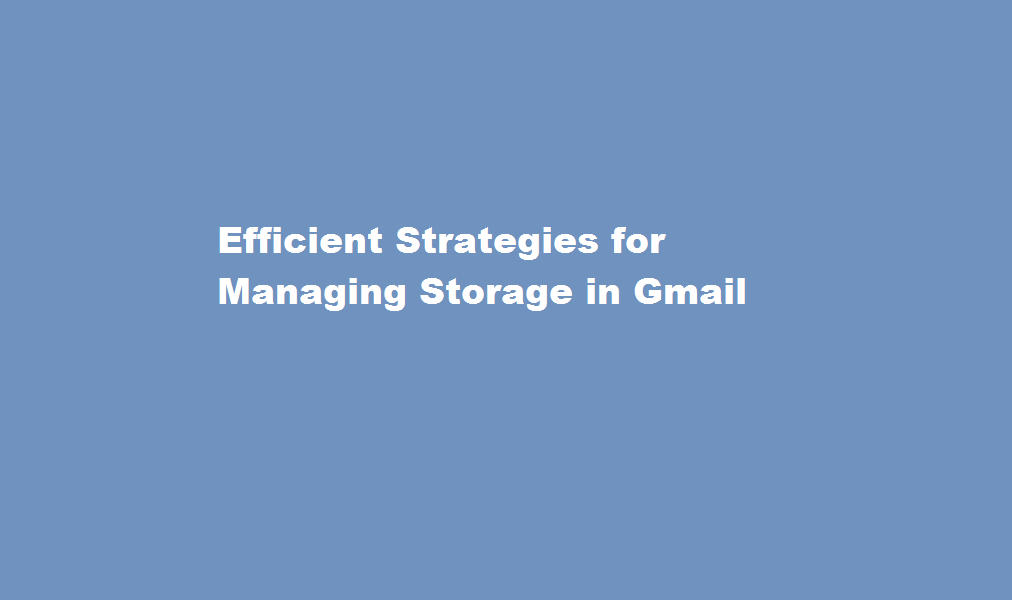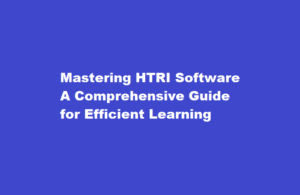Efficient Strategies for Managing Storage in Gmail
3 min read
Introduction
With the ever-increasing reliance on email communication, Gmail has become one of the most popular email platforms. However, limited storage space can pose a challenge, especially for heavy email users. To help you effectively manage storage in Gmail, this article presents practical strategies and tips to optimize your email storage, reduce clutter, and ensure smooth functioning of your account.
Delete Unnecessary Emails and Attachments
One of the most effective ways to free up storage space in Gmail is by deleting unnecessary emails and attachments. Start by reviewing your inbox and removing irrelevant or outdated messages. Gmail provides a search feature that allows you to search for specific terms or attachments, making it easier to identify and delete unwanted emails.
Additionally, large file attachments can quickly consume storage space. To address this, consider using Google Drive or other cloud storage services to store important files instead of keeping them as email attachments. Once uploaded to the cloud, you can simply include a link to the file in your email, reducing the storage burden on your Gmail account.
Utilize Labels and Filters
Gmail offers a labeling system that allows you to categorize and organize your emails. Take advantage of this feature to create labels for different types of messages, such as work, personal, or subscriptions. By applying labels to incoming emails, you can easily sort and locate specific messages later on.
Moreover, filters can automatically process incoming emails based on specific criteria, such as sender, subject, or keywords. By setting up filters, you can automatically apply labels, archive, or delete certain types of emails, saving you time and reducing clutter in your inbox.
Archive Old Emails
Instead of deleting every email, you can archive messages that you don’t need to access frequently. Archiving moves emails out of the inbox and into the “All Mail” section, making them searchable and easily retrievable when required. This approach allows you to keep your inbox clean while retaining access to important emails for future reference.
To facilitate the archiving process, Gmail provides an “Archive” button next to each message. Simply select the desired emails and click the button to move them out of the inbox. Remember to periodically review and delete unnecessary archived emails to maintain an organized mailbox.
Manage and Optimize Gmail Storage
Gmail provides a generous amount of free storage, but it is important to keep track of your usage. To do so, visit the “Manage Storage” section in your Google Account settings. Here, you can view your storage usage and identify which elements are occupying the most space.
If you find yourself nearing the storage limit, consider purchasing additional storage from Google to accommodate your needs. The cost is relatively affordable, and it provides a hassle-free solution to avoid running out of space.
FREQUENTLY ASKED QUESTIONS
Why is my Gmail storage always full?
Check Gmail storage. If your Gmail is taking up storage space, please check and delete the unneeded messages and attachments, including items in the “Spam” and “Trash” folders. 2. Select the emails you don’t need and click Delete.
Did Gmail increase storage?
The most notable of these is increased cloud storage without an associated price rise. 15GB of space for individual accounts—equivalent to a standard Gmail account—was previously included, which has recently increased to a reliable 1TB of online storage.
Conclusion
Effectively managing storage in Gmail is crucial to maintaining an organized and efficient email account. By following these strategies, including deleting unnecessary emails and attachments, utilizing labels and filters, archiving old emails, and managing your storage allocation, you can optimize your Gmail experience and ensure a clutter-free inbox.
Read Also : Mastering Google Drive A Comprehensive Guide to Efficient File Management






